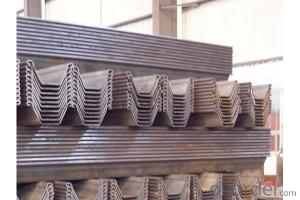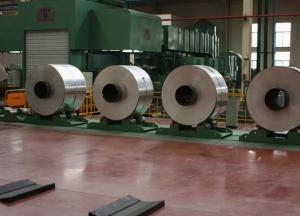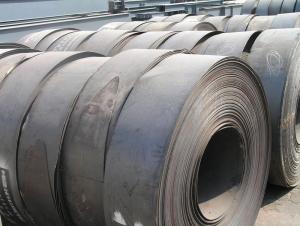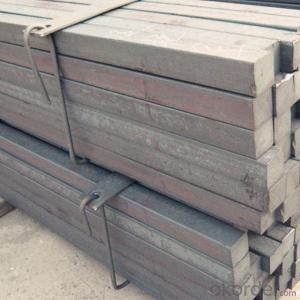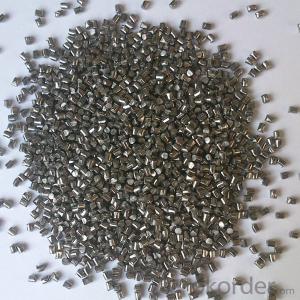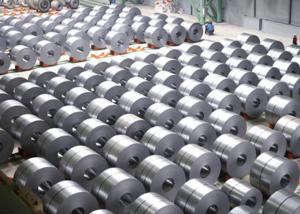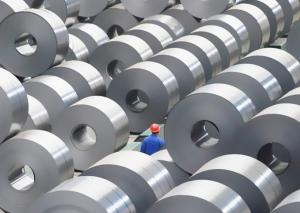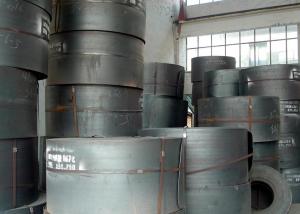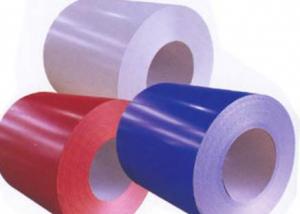L/S profile Steel Sheet Pile WRL WRS
- Loading Port:
- China Main Port
- Payment Terms:
- TT OR LC
- Min Order Qty:
- -
- Supply Capability:
- -
OKorder Service Pledge
OKorder Financial Service
You Might Also Like
Specifications of L/S profile Steel Sheet Pile WRL WRS:
L Profile sheet piles
Profile
| Dimension | Mass | Moment of Inertia | Elastic section Modulus | |||
Width B | Height H | Thickness T | Per Pile
| Per wall
| |||
| mm | mm | mm | Kg/m | Kg/ m2 | Cm4/m | Cm3/m |
WRL1.5 | 700 | 100 | 3.0 | 21.4 | 30.6 | 724 | 145 |
WRL2 | 700 | 150 | 3.0 | 22.9 | 32.7 | 1674 | 223 |
WRl3 | 700 | 150 | 4.5 | 35.0 | 50.0 | 2469 | 329 |
WRL4 | 700 | 180 | 5.0 | 40.4 | 57.7 | 3979 | 442 |
WRL5 | 700 | 180 | 6.5 | 52.7 | 75.3 | 5094 | 566 |
WRL6 | 700 | 180 | 7.0 | 57.1 | 81.6 | 5458 | 606 |
S Profile sheet piles
Profile
| Dimension | Mass | Moment of Inertia | Elastic section Modulus | |||
Width B | Height H | Thickness T | Per Pile
| Per wall
| |||
| mm | mm | mm | Kg/m | Kg/ m2 | Cm4/m | Cm3/m |
WRS4 | 600 | 260 | 3.5 | 31.2 | 41.7 | 5528 | 425 |
WRS5 | 600 | 260 | 4.0 | 36.6 | 48.8 | 6703 | 516 |
WRS6 | 700 | 260 | 5.0 | 45.3 | 57.7 | 7899 | 608 |
WRS8 | 700 | 320 | 5.5 | 53.0 | 70.7 | 12987 | 812 |
WRS9 | 700 | 320 | 6.5 | 62.6 | 83.4 | 15225 | 952 |
Steel Grade for Sheet Pile

Usage and Applications of L/S profile Steel Sheet Pile WRL WRS:
1. Used for the permanent constructional structure such as embankment, harbors, docks, retaining walls, anti-earthquake reinforcement project, flood gates, etc
2. used for the provisional structure to seal the mountain, provisionally to retain the wall, to cut off the river, to cofferdam, to lay the pipeline and to ward off the earth, the water or the sand
3. Used for the flood-fighting and emergency rescues to prevent the flood, collapse, sink or sediment flow, etc.
- Q:How is steel sheet metal stamped for automotive parts?
- Steel sheet metal is stamped for automotive parts through a process called sheet metal stamping. This involves using specialized machines and tooling to cut, bend, and shape the steel into the desired automotive component. The process typically includes steps such as blanking, piercing, forming, and trimming to achieve the required shape and dimensions.
- Q:What are the applications of steel forgings in aerospace?
- Steel forgings have a wide range of applications in the aerospace industry. They are commonly used for critical components that require high strength, durability, and resistance to extreme temperatures. Some applications include aircraft engine components, landing gear, structural components, and wing attachments. Steel forgings offer superior mechanical properties and reliability, ensuring the safety and performance of aerospace systems.
- Q:What are the environmental impacts of steel production and the use of steel products?
- The environmental impacts of steel production and the use of steel products are significant. Steel production is a highly energy-intensive process, leading to high levels of greenhouse gas emissions, particularly carbon dioxide. The extraction of raw materials, such as iron ore and coal, for steel production also contributes to deforestation, habitat destruction, and air and water pollution. Additionally, steel production generates large amounts of solid waste and toxic byproducts, which can contaminate soil and water sources. Furthermore, the use of steel products, while durable and recyclable, can contribute to resource depletion and waste accumulation if not properly managed. Overall, the steel industry's environmental impacts necessitate the adoption of sustainable practices and technologies to minimize pollution, reduce energy consumption, and promote circular economy principles.
- Q:How is steel wire galvanized?
- Steel wire is galvanized by immersing it in a bath of molten zinc or by electroplating it with a layer of zinc. This process helps to protect the steel wire from corrosion and extends its lifespan.
- Q:What are the different types of steel products used in the energy sector?
- The different types of steel products used in the energy sector include pipes, tubes, plates, and structural steel. These materials are used in the construction of pipelines, power plants, refineries, and other energy infrastructure. Additionally, stainless steel is commonly used in the production of turbines and other equipment due to its corrosion resistance and high temperature strength.
- Q:What are the factors to consider when selecting the right type of steel for a specific application?
- When selecting the right type of steel for a specific application, there are several factors to consider. These include the required strength and hardness, corrosion resistance, weldability, formability, and cost. Additionally, factors such as the environment in which the steel will be used, the load-bearing requirements, and any specific industry standards or regulations must also be taken into account. Overall, a thorough understanding of the application's requirements and careful consideration of these factors will ensure the selection of the most suitable type of steel.
- Q:What are the common types of steel products used in the pet food and supplies industry?
- Some common types of steel products used in the pet food and supplies industry include stainless steel bowls, crates and cages made of galvanized steel, steel shelving units, steel storage containers, and steel wire mesh for fencing.
- Q:How is steel used in the energy sector?
- Steel is used in the energy sector in various ways, primarily for infrastructure and equipment. It is used to construct power plants, transmission towers, and pipelines, providing the necessary structural strength and durability. Additionally, steel is used in the production of turbines, generators, and transformers, which are crucial components in the generation and distribution of electricity.
- Q:How is steel pipe coated for corrosion protection?
- Steel pipe can be coated for corrosion protection using various methods, including applying a layer of zinc through hot-dip galvanizing, using epoxy or polyethylene coatings, or employing a combination of both. These coatings create a barrier between the steel and the surrounding environment, preventing corrosion and extending the lifespan of the pipe.
- Q:What are the different types of steel wire mesh products?
- There are several different types of steel wire mesh products available, including welded wire mesh, woven wire mesh, expanded metal mesh, and perforated metal mesh. Each type has its own unique characteristics and uses. Welded wire mesh is made by welding individual wires together at their intersections, creating a strong and durable mesh. Woven wire mesh is created by weaving wires together in a crisscross pattern, resulting in a flexible and versatile mesh. Expanded metal mesh is produced by cutting and stretching a metal sheet, creating diamond-shaped openings and providing excellent strength and rigidity. Perforated metal mesh is made by punching holes into a metal sheet, allowing for airflow, visibility, and various design options.
1. Manufacturer Overview |
|
|---|---|
| Location | |
| Year Established | |
| Annual Output Value | |
| Main Markets | |
| Company Certifications | |
2. Manufacturer Certificates |
|
|---|---|
| a) Certification Name | |
| Range | |
| Reference | |
| Validity Period | |
3. Manufacturer Capability |
|
|---|---|
| a)Trade Capacity | |
| Nearest Port | |
| Export Percentage | |
| No.of Employees in Trade Department | |
| Language Spoken: | |
| b)Factory Information | |
| Factory Size: | |
| No. of Production Lines | |
| Contract Manufacturing | |
| Product Price Range | |
Send your message to us
L/S profile Steel Sheet Pile WRL WRS
- Loading Port:
- China Main Port
- Payment Terms:
- TT OR LC
- Min Order Qty:
- -
- Supply Capability:
- -
OKorder Service Pledge
OKorder Financial Service
Similar products
New products
Hot products
Related keywords
